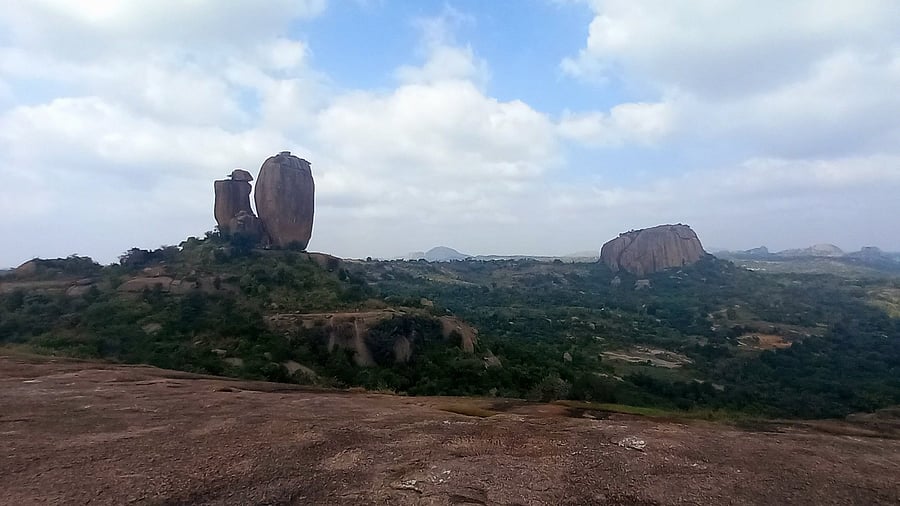
Credit: Special arrangement
For people from outside Bengaluru, Ramanagara district is synonymous with Sholay and the rocky terrain where it was filmed. The district was carved out of Bengaluru Rural and bore various names like Samsherabad and Closepet (after Sir Barry Close) in pre-independence India, before it became Ramanagara. Its rich terrain, huge granite hills, rocky outcrops, caves and monolithic structures mean a feast for rock-climbing enthusiasts and trekkers alike. The way from Bengaluru to Ramanagara is dotted with coconut and banana plantations. The region has also made way for more holiday facilities, including breweries, rock gardens, and farmhouses, dotted along the Arkavathi river. There are also spaces for birdwatching on the route towards Channapatna and Mysuru.
En route to Ramanagara is the first main stop — the Dodda Aalada Mara (or the big banyan tree) in Kethohalli village. The tree greets you on the main road with its massive expanse. This 400-year-old giant occupies almost three acres of land. A board displayed there tells you more about other older trees in India. In the year 2000, the mother tree’s trunk perished due to disease. Today, the prop roots of this banyan tree have turned so big, they appear to be individual trees themselves. The huge tree is populated by dozens of monkeys.
After this stop, the winding roads lead you towards Savandurga hill, a trekker’s paradise. The two hills, named Karigudda and Biligudda, offer amazing views, even from far away. Apparently, this mountain has plenty of facilities for climbers.
Our next stop was the steep Kootagal hill and the Thimmappana betta, which houses a small temple. A pushkarini (or kalyani) lies adjacent to the temple, which is built on a small hillock flanked by hills.
One can venture on towards the sunset point or climb up the hill peaks for a grand view of the ‘jodi bandi’ or the twin monoliths. These two steep rocky outcrops of granite that jut out of the terrain captivate you.
The view is awe-inspiring, and one can easily lose all sense of time, just looking at the natural beauty of this region. It is a wonder how these two huge rocks balance atop the hill below. The vast expanse of Ramanagara can be seen from here. The granite rocks in this region have plenty of small holes formed naturally. These alcoves are home to vultures, bulbuls and other birds.
Farmers from the region, along the Arkavathi river, also report frequent visits by sloth bears, which are found in this region. We could spot several paw prints and small pits dug by a bear at one such farm.
Apart from Saturdays when people come to worship at the temple, there are few visitors here. It appears to be a favourite hangout for college students. A small shack offers snacks and cold drinks, and one would need to travel further to get anything to eat.
Though Ramanagara gained fame owing to the shooting of films like Sholay, it has a rich history of its own. Its location is a big plus. We could travel further towards Channapatna within a few minutes to look at the wooden toys and taste some of the best organic foods and authentic south Karnataka dishes in this part of the state.